Complete Guide to Monthly Retainer Agreements
We've gathered everything you need to know about monthly retainer contracts in one post — from calculating your retainer fee to best practices for creating retainer contracts. Learn how to get your first retainer client!
— Propoze
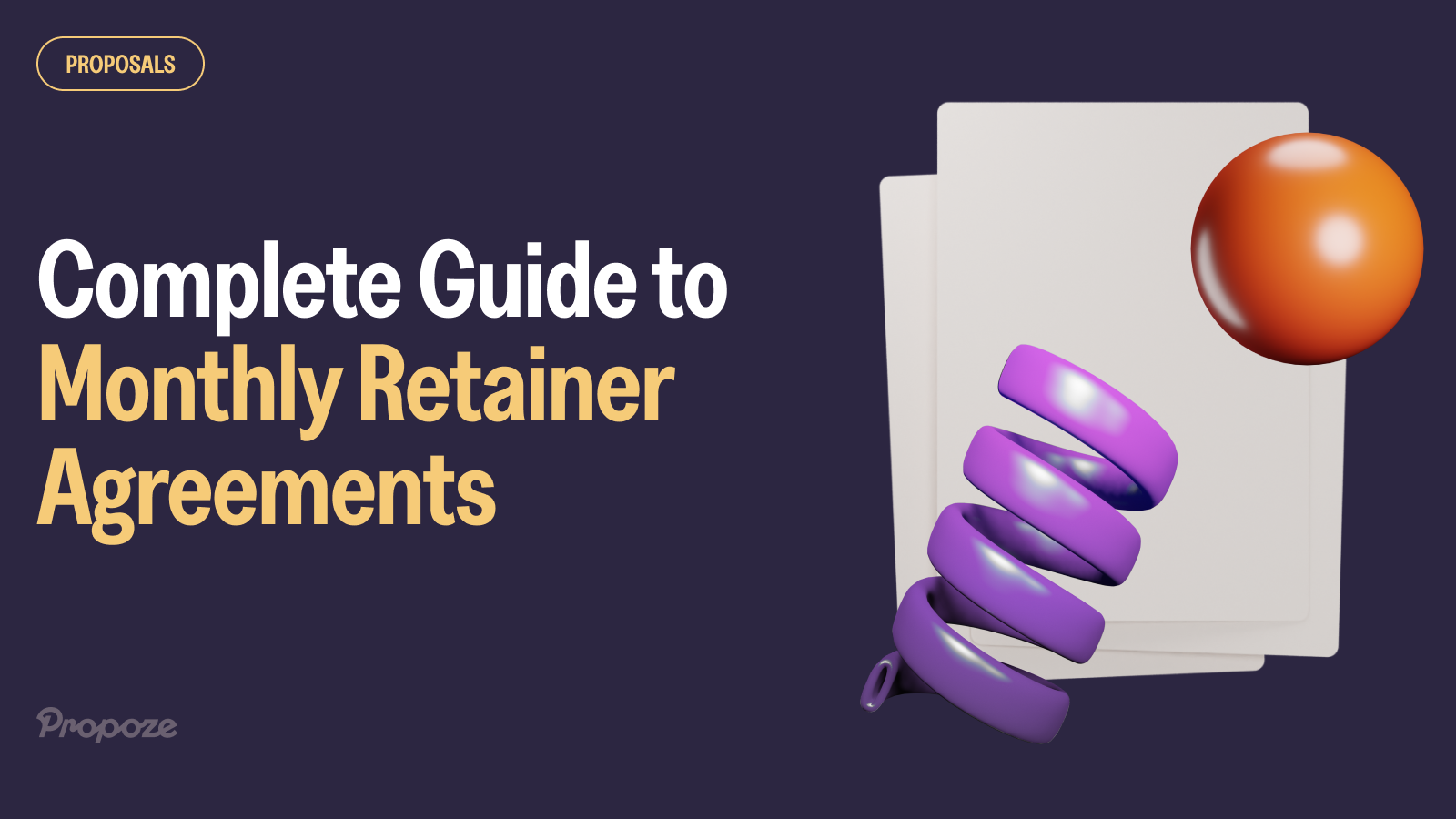
Are you tired of chasing down new clients every month and dealing with unpredictable cash flow?
A monthly retainer agreement might be exactly what you need.
By setting up retainer contracts, you can secure a steady income while delivering ongoing value to your clients for a fixed monthly fee.
In this guide, we’ll cover everything you need to know about monthly retainer agreements — from what they are and how to calculate a fair retainer fee, to how they benefit both you and your clients.
We’ll also walk you through creating a rock-solid retainer contract that ensures you get paid on time and your clients receive consistent, high-quality service.
By the end, you’ll have all the tools to start working with retainer contracts and build a more predictable, stable income.
What is a monthly retainer?
A monthly retainer is an agreement between a service provider and a client, where the client pays a fixed fee on a monthly basis for a set of predetermined services.
There's barely a limit on what services can be sold with such agreements - marketing, consulting, legal, development, design...
In most cases, you can even ask for an advance payment if this is the first time in a working relationship with a particular client.
A great thing about this type of contract is that your retainer client receives continuous support without worrying about the cost of each individual service.
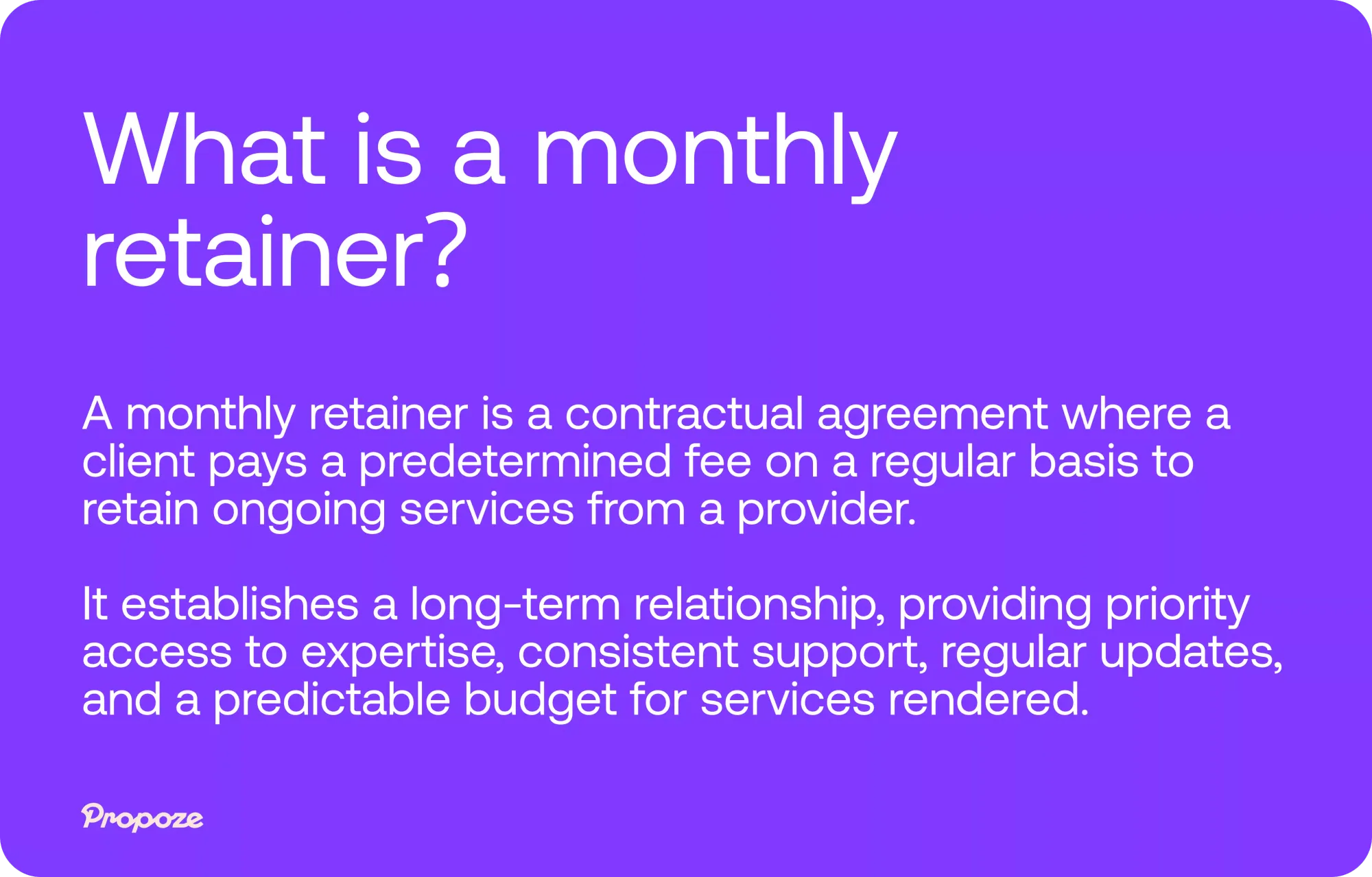
Needless to say, this type of agreement is beneficial for both parties.
Think of monthly retainers as a win-win: they give providers a steady paycheck and clients get the A-team on their side, always ready to go.
It's like having your cake and eating it too—better planning, smoother budgeting, and no last-minute scrambles.
Everyone knows what's coming up, so it's easier to make things happen without the guesswork.
Just a quick note. If you're looking to improve your sales efficiency and get more clients, you'll want to read this guide!
Understanding monthly retainer agreements
Picking the right monthly retainer model is crucial—it's like choosing the perfect ingredient for your recipe.
By understanding each type, you ensure your project and budget are in perfect harmony.
#1 Time-Based Retainers
With time-based retainers, clients pay for a fixed number of hours each month. This model offers maximum flexibility, allowing tasks to shift based on the client's evolving needs. However, it requires careful tracking of hours to avoid disputes over how the time is spent.
⛔ Limitations: Precise tracking of hours is crucial, and disagreements may arise if clients feel hours are not being allocated properly.
➡️ Example: A digital marketing consultant might provide 20 hours per month on tasks like SEO audits, content creation, and paid ad campaigns. Each month, the consultant can adjust their focus depending on the client's needs—ensuring flexibility while maintaining a fixed monthly fee.
#2 Project-based retainers
Project-based retainers are perfect for ongoing projects with predictable requirements and consistent deliverables. Clients pay a fixed monthly fee to have specific tasks or projects managed and completed over time, making it ideal for businesses that need a steady flow of work completed.
⛔ Limitations: If the project scope expands, it can blur the boundaries of what’s included in the contract, leading to potential overwork or misunderstandings.
➡️ Example: A web design agency might offer a project-based retainer to a client needing ongoing website updates. For example, they could commit to delivering one new landing page or website feature each month for a fixed fee. This allows the client to plan for consistent progress while the agency enjoys a predictable workflow.
#3 Result-based retainers
Result-based retainers focus on achieving specific outcomes or hitting pre-defined milestones. Payment is tied directly to the results delivered, making this model a perfect fit for performance-driven projects. This option is particularly attractive for clients who are focused on measurable outcomes and want to ensure they’re only paying for tangible results.
⛔ Limitations: Providers may face challenges in controlling external factors (such as market conditions or changes in client behavior) that can affect outcomes, making it harder to guarantee consistent results.
➡️ Example: An SEO agency operating under a result-based retainer might charge a fee based on improvements in keyword rankings or organic traffic growth. For instance, they could earn a bonus for each keyword that reaches the top 10 on Google or for increasing website traffic by 20% within a set period.
#4 Mixed retainers
Mixed retainers offer a hybrid approach, combining elements of time-based, project-based, and result-based models to suit more complex or evolving client needs. This model is especially useful for services requiring a blend of strategies, like consulting, project execution, and performance tracking.
⛔ Limitations: Managing client expectations can be challenging, especially when blending different billing methods. Clear communication and well-defined deliverables are essential to avoid misunderstandings.
➡️ Example: A digital marketing agency could set up a mixed retainer by offering a fixed monthly fee for consulting and strategy sessions, combined with additional fees for specific deliverables like social media campaigns or SEO performance reports. This model allows flexibility in scope while ensuring the client gets both ongoing support and targeted project results.
#5 Service-level agreement (SLA) retainers
An SLA-based retainer is built around guaranteeing a specific level of service, commonly found in industries like IT, customer support, or managed services. Clients pay a fixed monthly fee to ensure they receive priority service, fast response times, or guaranteed uptime, providing peace of mind that their critical systems are monitored and maintained.
⛔ Limitations: Providers must carefully allocate resources to meet service guarantees, which can lead to overwork if client demands surge unexpectedly. Balancing multiple SLA agreements simultaneously requires robust management and clear communication.
➡️ Example: An IT services company offers a 24/7 customer support SLA to a corporate client. Under this agreement, the IT company guarantees a response time of under 30 minutes for critical server outages, ensuring the client’s business stays operational with minimal downtime.
#6 Fixed-deliverable retainers
Fixed-deliverable retainers involve a set fee for specific, recurring deliverables each month. This model is perfect for services where the scope of work remains consistent, allowing clients to receive regular outputs without renegotiating terms.
⛔ Limitations: There’s limited flexibility if the client’s needs evolve during the contract period. Changes or additions to the deliverables may require amendments to the agreement, which can complicate the process.
➡️ Example: A content marketing agency might use a fixed-deliverable retainer to provide four blog posts per month for a set fee. The client knows exactly what they’re getting—consistent content delivered on time—while the agency benefits from a stable workload and income.
What is the difference between hourly and retainer agreements?
Both hourly and retainer agreements are common ways service providers charge for their project work nowadays. While hourly billing is based on the exact amount of time you've spent on a project, retainer billing is based on a fixed fee for a set of predetermined services.
Hourly billing is great for clients who may only need occasional services or support. But, for service providers, hourly agreements may not be that attractive.
And the reasons are obvious. There is no guaranteed income, it all depends on how many work hours can you sell and how many potential clients and future projects you have lined up.
On the other hand, with retainer billing, you can secure stability for both yourself and the client. The client pays a fixed monthly fee for an agreed-upon set of services and there's no longer a need for further negotiation.
However, this opens doors to long-term projects, deepening your retainer relationship, and earning more money as a contractor. It makes sense, right?

What does a monthly retainer agreement include?
There are several key aspects of a monthly retainer agreement you need to take pay attention to.
Here's what these agreements usually include:
- Scope of services: This section outlines the specific services that the service provider will offer to the client on an ongoing basis.
- Retainer fee: This section outlines the fixed monthly fee that the client will pay for the services provided by the service provider.
- Payment terms: This section outlines the payment terms, including the due date, the accepted methods of payment, and any late payment fees.
- Termination clause: This section outlines the terms and conditions under which either party can terminate the agreement.
- Confidentiality clause: This section outlines the terms and conditions of confidentiality and non-disclosure of sensitive information.
- Intellectual property rights: This section outlines the ownership and use of any intellectual property that is created as part of the ongoing services.
- Duration of agreement: This section outlines the duration of the agreement and any provisions for renewal.
Overall, a retainer agreement is a highly detailed contract that protects both parties and will ensure you have a successful ongoing relationship.
When drafting the agreement, be sure to clearly outline the expectations and responsibilities of both parties.
Why should you use monthly retainer agreements?
Monthly retainer agreements offer some clear, practical benefits compared to hourly billing.
Here’s why switching to retainer work might be a game-changer for you:
Benefit #1: Predictable, stable income
With a monthly retainer, you can count on a steady paycheck every month. Unlike hourly work where income can fluctuate based on how much work you get done, retainer agreements guarantee a set fee, regardless of how many hours you work.
This means you can plan your budget, manage cash flow better, and scale your business confidently.
On top of that, the monthly retainer model makes it easier to build long-term relationships with clients. You’re not just clocking hours—you’re committing to deliver consistent value over time.
This goes a long way in strengthening trust and increasing the chances that clients will stick around for the long haul.
Benefit #2: Build stronger relationships with retainer clients
Let’s be honest — working on a few long-term projects is a lot more rewarding than juggling ten smaller gigs.
With a monthly retainer agreement, you’re not just doing quick, one-off tasks. Instead, you get to really understand your client’s business and develop a deeper sense of what they need over time.
As you work together, you’ll become more than just a freelancer—you’ll be a trusted partner. This kind of relationship leads to mutual respect, making things like asking for upfront payments or revisiting contracts much easier.
Plus, when clients know they can count on you for consistent, quality work, they’re more likely to stick around and even come back with new projects down the line.
Benefit #3: Less administrative work
Let’s face it — no one became a freelancer or took up an agency project to spend hours dealing with paperwork. Invoicing, contract negotiations, endless emails — it all adds up.
But with a few solid retainer agreements, you can drastically cut down the time you spend on admin work.
Sure, you’ll still have regular check-ins with your retainer clients, but you won’t be constantly negotiating new terms or scrambling to send out invoices every week.
When everything is handled in one retainer contract, you can focus more on what you do best — delivering great work — and less on managing paperwork. This might seem like a small win, but it saves you a ton of time and energy over the long run.

Benefit #4: Better cash flow
This one’s a no-brainer. With a monthly retainer agreement, you can get paid upfront before even starting the work, instead of waiting until the end of the project.
If cash flow has been an issue, retainers can really help smooth things out.
Let’s say you’ve got four clients on a retainer. You know exactly how much money is coming in each month.
Even better, you’ll often receive that payment at the start of the month, giving you the funds to cover expenses, invest in your business, or go after new clients without worrying about when the next payment will hit.
It’s a win-win for keeping your income steady and predictable.
Benefit #5: Your clients get a better service
When you lock in a long-term retainer agreement, it frees you up to really focus on delivering top-notch service instead of constantly searching for new clients or negotiating rates. It’s that simple.
For instance, if you’ve got a 6-month retainer with a client, you’re not spending time worrying about where the next paycheck is coming from.
Instead, you can put all your energy into improving the quality of your work and maybe even extending that contract beyond six months. With a steady stream of income, you’re in a better position to deliver consistent, high-quality service that keeps your clients happy and coming back for more.
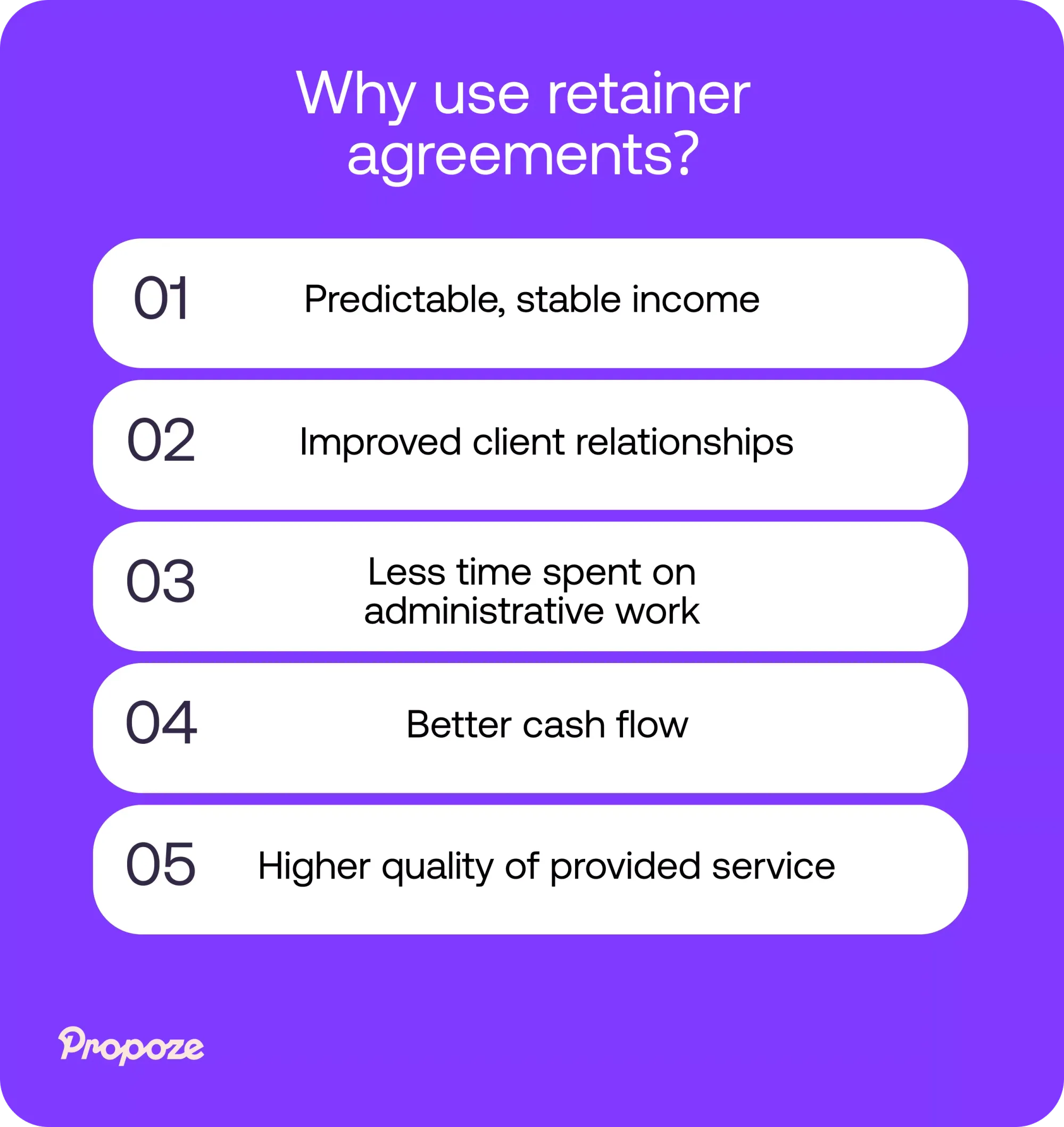
Earned vs. unearned retainer fee: what's the difference?
It's crucial to understand the difference between earned retainer fees and unearned retainer fees.
An earned retainer fee is a payment made in advance for work that has already been completed. For example, if an independent contractor has completed work for a client and the client has paid a retainer fee for that work, that fee is considered earned.
On the other hand, an unearned retainer fee is an upfront payment for work that has not yet been completed. For example, if a client pays a retainer fee at the beginning of the month, that fee is considered unearned until you have completed work for that month.
It's important to track earned and unearned retainer fees separately, as earned fees can be recognized as revenue immediately, while unearned fees need to be recognized over time as work is completed.

By understanding the difference between earned and unearned retainer fees, you can better manage your finances and ensure that you recognize revenue correctly.
How to calculate the monthly retainer fee?
Calculating retainer fees can be a bit tricky, as it requires considering a number of factors, such as the scope of work, the level of expertise required, and the retainer hours required.
If you’re unsure how to calculate a fair retainer fee, we’ll show you an easy method to get started.
Here's how to calculate it in 5 steps.
Step #1: Determine the scope of work
The first thing you need to do before you calculate the monthly fee is to determine the scope of work for this project. This is unavoidable if you want to avoid scope creep.
To start, review the client's needs, identify which services are required, and try to estimate (as accurately as possible) the number of hours required (monthly) to complete the work.
In the end, this may include:
- Specific tasks (e.g., 10 hours of consulting).
- Deliverables (e.g., monthly social media reports or website maintenance).
Step #2: Evaluate your level of expertise
The next step is to evaluate how much value can you actually bring to the project. Let's be honest here - if you're just starting out, charging ludicrous fees for a few hours of work won't get you far.
Start by reviewing your qualifications and experience, check your track record, and research the market rates for similar services. But if you're, let's say, a freelance senior backend developer, you could charge a hefty amount.
Keep in mind, after your contract expires, there's always room for negotiating better rates - if there are some concrete results.
Step #3: Calculate your annual fee
If you've already done similar work for a few clients, you'll know how much should a certain service cost.
But if you have a certain revenue goal you want to reach, here's how to do it.
For example - your annual salary goal could be to earn $75,000 a year.
And you don't want to work 52 weeks/year, but only 48 weeks/year.
Also, you don't want 40 hours work weeks, but 30-hour work weeks.
So, let's divide this $75,000 by 48 working weeks. Your weekly target should, in this case, be around $1562/week.
Since your goal is to work 30 hours/week, think about charging $52/hour. Of course, you'll have to study your competitors' rates, check the industry standard, and take the level of your expertise into account. If your annual salary goal turns out to be below the industry standard, try recalculating your fees.
But what's important here is that you include overhead and administrative expenses like:
- Taxes
- Equipment
- Software subscriptions
- Time spent on client reporting, internal meetings, and invoicing
- Utility bills
- Office rent
- etc.
Think about your desired profit margins, include the expected expenses, and you'll more easily calculate your hourly rate.
Step #4: Estimate how much time you need to spend on the project
Now that you've calculated your hourly rate, start estimating the time commitment required for this project.
Start by breaking down the work into smaller, specific tasks and estimating the time for each task.
This could include:
- Billable hours (e.g., actual work time, meetings, etc.).
- Non-billable hours (e.g., project management, internal reviews).
Step #5: Calculate your monthly fee
Finally, you can calculate the monthly retainer fee by multiplying the estimated time commitment by the hourly rate. Your retainer fee should reflect the scope of work, your level of expertise, and the value that you can bring to the project.
By following these 5 steps, you can calculate a fair and reasonable monthly fee that reflects the value of your services and the needs of your clients.

The 7 best practices for creating monthly retainer contracts
Once you've decided to work with monthly retainers, you'll need to create a contract that will protect both your and your client's interests. More accurately, you'll want to clearly outline all the terms of your engagement with the client, so no scope creep shows up along the way.
Here are the seven best practices for creating monthly retainer contracts.
#1 Write a secure and binding contract
Here are some tips when creating a monthly retainer contract.
2️⃣ Clearly define the scope of work. To prevent any misunderstandings and ensure that both you and the client have a clear understanding of the work that needs to be done, be very specific when defining the scope of work.
3️⃣ Set out your payment terms. Clearly state your payment terms so the client can know what are the fixed monthly expenses, include the retainer fee and any other additional fees that may apply. Also, be sure to state how and when you want for the client to complete the payment. This is necessary to ensure both you and the client are 100% clear on the financial terms of your contract.
4️⃣ Include a confidentiality clause. If you're working with sensitive information, a confidentiality clause is a must. This is necessary to protect your client's information and ensure it doesn't get disclosed to any 3rd party.
5️⃣ Specify the duration of the agreement. Be sure to specify the duration of your retainer agreement and include renewal terms. This will eliminate all possible confusion and misunderstandings over when the agreement is ending.
In short, having a secure and binding contract is your #1 priority here.
#2 Make room for additional work
One thing is for sure - the scope of work will change over time. And to avoid any dispute over additional work, it's good to make room for additional services in your contract.
Be sure to include a clause for additional work in your contract. This will help ensure that both parties fully understand when the additional work may be required and how will it be handled.
Also, think about future services you could offer to your client and how you can upsell the client in case new needs arise. And, of course, specify the payment terms for these occasions.
#3 Offer your services in different tiers
Not only is this tactic great for upselling your clients, but you can provide your potential client with several options to choose from right from the beginning.
Here are a few tips on how to introduce service tiers.
2️⃣ Define the pricing for each tier. Ensure your pricing reflects the value of the services provided. Clients can easily see if your higher tiers have inflated prices.
3️⃣ Clearly define the deliverables for each tier. To prevent any future misunderstanding, be sure to clearly outline what the client will receive depending on the level of service.
This tiered strategy can help you attract more clients and ensure you have a constant influx of both smaller and larger projects. Also, be sure to include a custom tier so you can be more flexible when a client contacts you regarding a long-term contract.
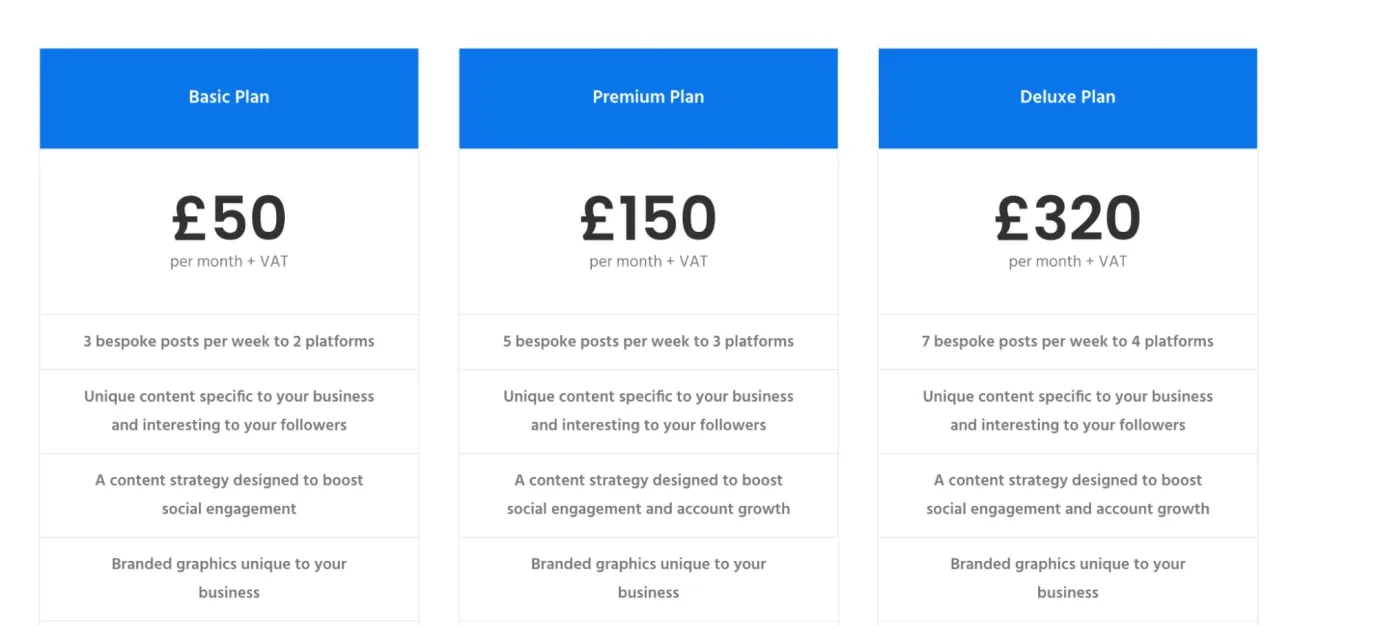
Here's an example of an agency using tiered pricing to attract clients of all sizes.
#4 Clearly define payment terms
This is one of the most important parts of every retainer contract and the part where you want zero misunderstandings. So, here's what you should do.
2️⃣ Define the payment method. Now, this is all about how you want to receive the payment. Specify which payment method you want to use, be it a bank transfer, credit card payment, PayPal, or even a payment in crypto.
3️⃣ Set the recurring payment due date. Here, you need to set a specific date. For example, it could be the 10th of each month.Define the late payment terms. This may include a late fee or a suspension of services until you receive the payment.
Defining the payment terms is highly important, as it is a basis for a professional relationship with your client, ensuring you get fairly compensated for your services.
#5 Send monthly reports to your clients
Sending monthly reports to your client is a crucial part of every successful retainer contract.
They keep your clients informed of the work you've done. This way, your clients will know more about the progress you've made toward achieving the set goals.
Here are some tips for creating monthly reports for your clients.
2️⃣ Set a recurring reporting date. It's important to specify when exactly will you send the monthly reports. For example, it could be the 15th of each month, followed by a short meeting with the client to better showcase your results.
3️⃣ Use clear language. Keep in mind, your clients aren't that fond of technical jargon. Try to explain any complex concept in simple terms.
4️⃣ Highlight your achievements. If you've hit a certain milestone or achieved a goal, be sure to let your clients know that. This helps them see the value you're providing.
This can help build trust and ensure that your clients are satisfied with your services.
Also, here's an example of a monthly sales report, including the most important metrics and presented with a large number of visuals.
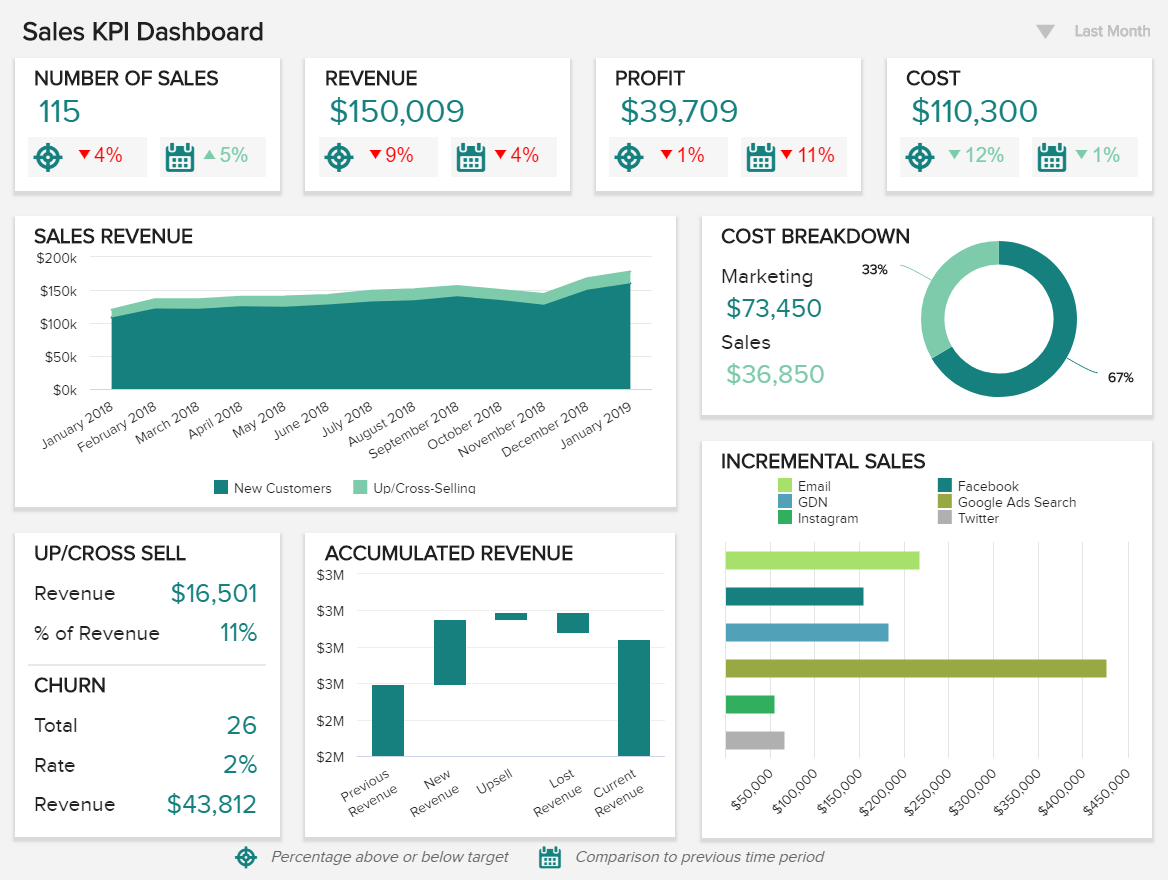
#6 Check your agreement from time to time
Be sure to check your retainer agreement occasionally to ensure that it's still meeting your and your client's needs. Chances are, some changes will be required.
First, set up a regular time to review your agreement. For example, this could be every 6 months or on a yearly basis.
Then, check for any changes in the scope of work or client needs. This is exactly what drives changes in the retainer agreement. Once you work out all the changes in the contract, reach out to your client and negotiate new terms for your ongoing work.
And if you're wondering how you can write an effective sales proposal that will get your client to agree to a new retainer agreement, here's the full guide.
#7 Create an offboarding strategy
Even though the retainer contracts are designed for long-term partnerships, there will come a time when either you or your client decide to end the collaboration.
For this transition to be smooth and without any misunderstandings, you'll need to employ an offboarding strategy.
Here's how to do it.
2️⃣ Clearly communicate the offboarding with your client. Be open and honest when telling the client why you're ending the arrangement. Let them know what to expect during this offboarding period.
3️⃣ Provide support to your clients. This may not be that necessary, but you don't want to burn the bridges you've been building for so long. Try helping your client find a replacement for your services or provide them with a list of recommended professionals.
4️⃣ Collect all the feedback you can. This is extremely important. What your past and current clients have to say about your services impacts how well you can acquire new clients. You'll find out what you can improve, how to retain clients in the future, and you'll have a few testimonials you can use to generate trust with new clients.
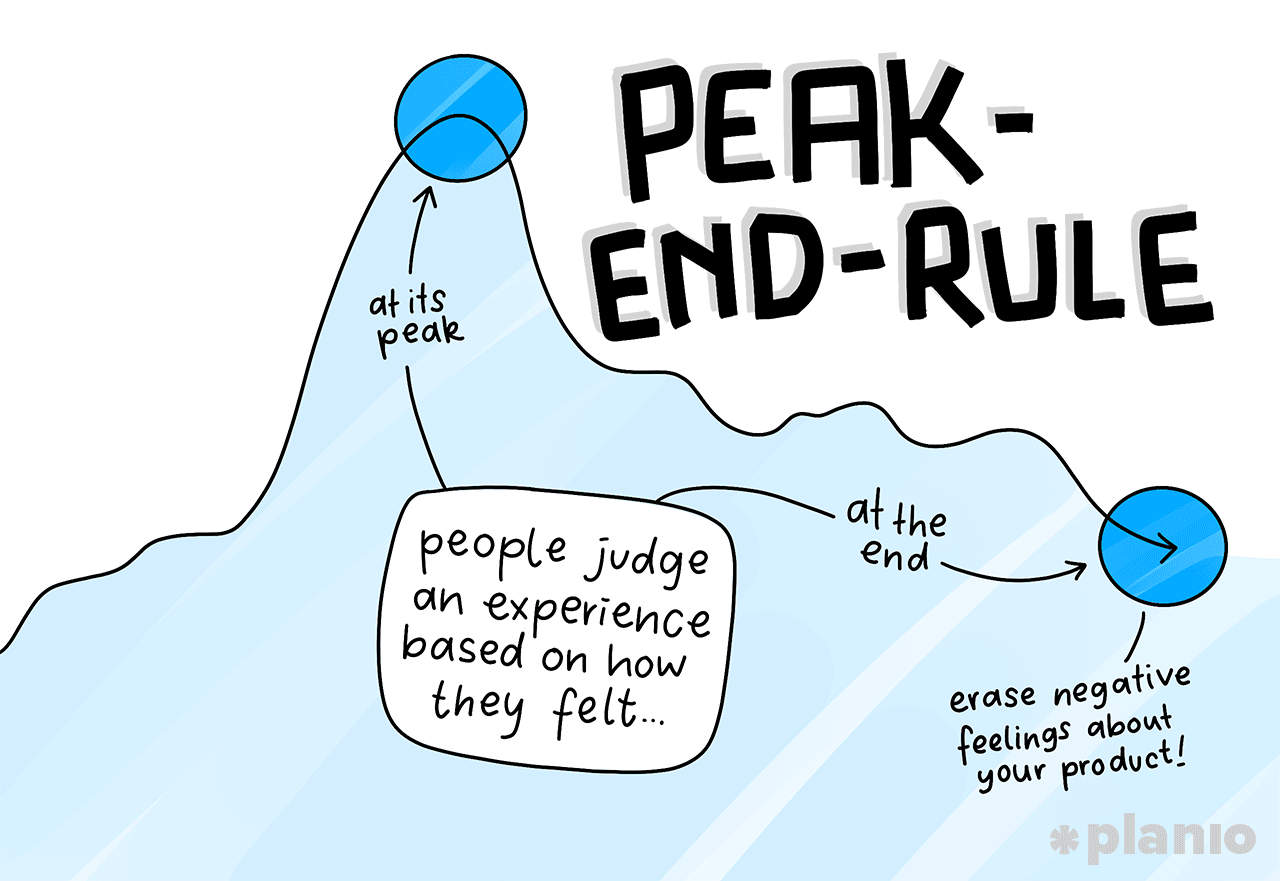
Keep in mind, if you do the offboarding the right way, the doors to that particular client are always open.
Not only this helps you preserve your reputation as a professional, but will help you get in touch again with that client and possibly make a new arrangement in the future.
How to negotiate a better monthly retainer fee?
Now, this is a very delicate process, but the most important part of this entire endeavor is to ensure you're fairly compensated for your services.
Here's what you can do to negotiate a better fee - in 4 practical steps.
Start by knowing exactly what your services are worth. Gather examples of how you’ve helped previous clients and the kind of ROI they’ve seen. When you can show the tangible benefits of your work, it’s much easier to justify a higher retainer fee.
2️⃣ Research the market
Take time to see what others in your industry are charging. Look at competitors' case studies and success stories—what are they achieving, and how are they pricing their services? This research not only helps you set a fair fee but also gives you more leverage during negotiations.
3️⃣ Think long-term
While it might be tempting to push for a higher fee upfront, remember that securing a long-term retainer contract can bring more financial stability over time. It’s often better to negotiate a fair monthly rate that allows for consistent income rather than focusing on a big one-time payout.
4️⃣ Stay professional and open to compromise
Negotiating isn’t just about asking for more—it’s about listening to your client’s needs and finding a solution that works for both sides. Be flexible and open to adjusting your retainer fee based on the client’s specific requirements. In the end, a strong working relationship is what leads to long-term success.
By following these steps, you can negotiate a monthly retainer fee that reflects the value you provide, while keeping your clients happy and engaged.
Maximizing success with retainers
To ensure both providers and clients reap the maximum benefits from retainer agreements, it's crucial to address common challenges like scope creep, while fostering clear and frequent communication.
Here are actionable tips to consider.
2️⃣ Importance of regular reviews: Schedule periodic reviews of the agreement to ensure it continues to meet the evolving needs of both parties. These sessions are opportunities to adjust the scope, discuss new objectives, and refine strategies based on performance and feedback.
3️⃣ Effective communication practices: Maintain open lines of communication through regular check-ins and updates. Utilize project management tools or platforms that allow for transparent tracking of tasks and milestones. Encourage feedback from both sides to identify areas for improvement and celebrate successes.
Ready to sign your next monthly retainer agreement?
All in all, deciding whether a monthly retainer agreement is right for you depends on your unique circumstances.
However, understanding the differences between hourly and retainer agreements is a must.
In this blog post, you've learned how clients can benefit from monthly retainers, how to calculate your retainer fee, and how to negotiate a better one.
With these tips and considerations in mind, you are now ready to build a successful and sustainable business model with monthly retainers.
And if you need any help with your sales processes, please let us know! We're all about helping you close more deals. And what better way to do it than with Propoze!
You know how important a sales proposal is in the grand scheme of things. We'll help you create, polish, and send proposals extremely fast.
And if you need any help building a better proposal - you know what to do. Reach out to us at support@propoze.app and we'll be on it ASAP.
Follow us on our LinkedIn, Twitter, and Instagram accounts! We post regularly on proposal and sales-related topics.